A Scion Society of The Baker Street Irregulars

Elementary’s Holmes and Watson at the Hall of Fame for Great Americans
“… having attained the national fame which he has now achieved.”
– The Valley of Fear (VALL)
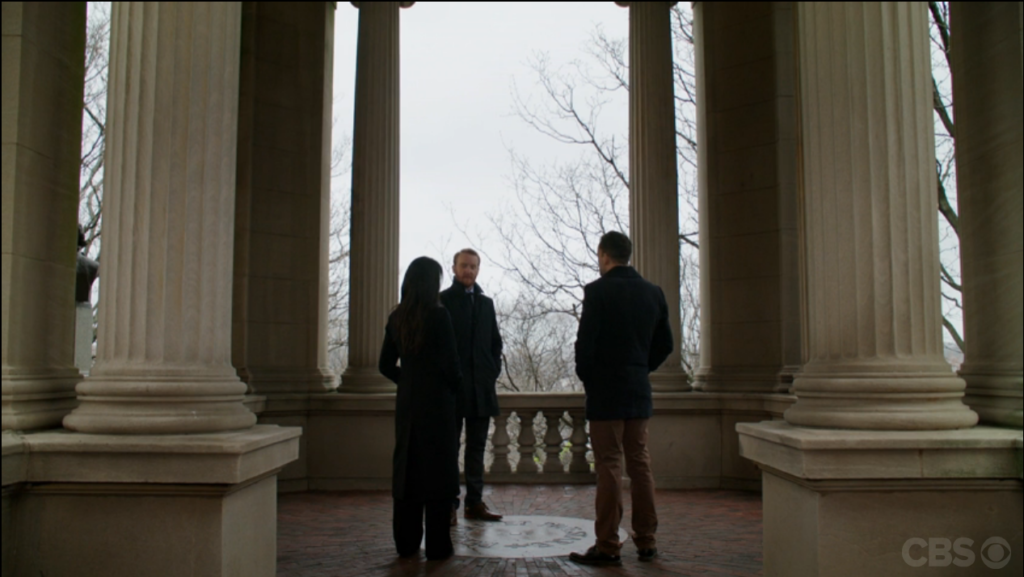
In the May 1, 2016 episode of CBS’s Elementary (Season 4, Episode 23 – The Invisible Hand), Holmes and Watson determine that someone has stepped into the leadership void caused by Moriarty’s arrest and imprisonment. Holmes investigates further and discovers Professor Joshua Vikner as the new leader of the criminal organization. Holmes and Watson confront Vikner in his office. Vikner then leads the pair outside to the terrace, where he comments, “I teach here sometimes, when the weather is nice.” These scenes occur starting around the 15:20 mark of the show.
“Here” is the colonnade outside the Gould Memorial Library on the campus of Bronx Community College in New York. More precisely, the colonnade is the Hall of Fame for Great Americans.
From the Bronx Community College’s webpage for the Hall of Fame:
The Hall of Fame for Great Americans at Bronx Community College, the original “Hall of Fame” in this country, is a New York landmark institution founded in 1900. The Hall of Fame 630-foot open-air Colonnade to honor prominent Americans who have had a significant impact on this nation’s history. The Hall of Fame was originated by Dr. Henry Mitchell MacCracken, Chancellor of New York University from 1891 to 1910, and was designed as part of the construction of an undergraduate college of that university.
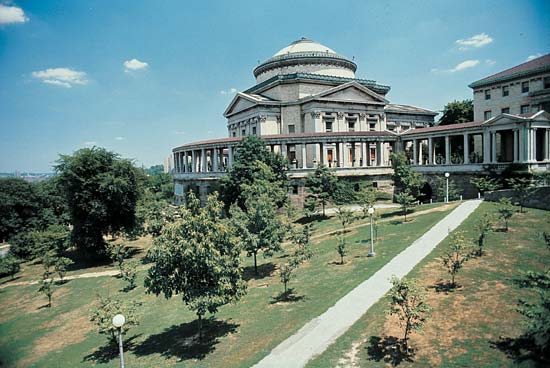
Built in a sweeping semicircular Neo-Classical arc with wings at either end, it provides a panorama across the Harlem River to the Cloisters in Fort Tryon Park and beyond to the Palisades. It is a unique and patriotic reminder that this country’s phenomenal growth has been due to the vitality, ingenuity, and intellect of these individuals.
The principal feature of the Hall of Fame is its 630-foot open-air Colonnade, which houses the bronze portrait busts of the honorees. Designed by the celebrated architect Stanford White and financed by a gift from Mrs. Finley J. Shepard (Helen Gould) to New York University, the Hall of Fame was formally dedicated on May 30, 1901.
The complex of three buildings adjoining the Colonnade-Gould Memorial Library, the Hall of Languages, and Cornelius Baker Hall of Philosophy-were also designed by Stanford White and bear a close conceptual relationship to the Colonnade, with the library as the central focus. These three buildings were among the first constructed on the University Heights campus-Language Hall (1894), Gould Memorial Library (1899), and Philosophy Hall (1912).
The Colonnade was designed with niches to accommodate 102 sculptured works and currently houses the busts and commemorative plaques of 98 of the 102 honorees elected since 1900.
The 98 bronze busts that line the Colonnade are original works by distinguished American sculptors. The bronze tablets recessed in the wall beneath the busts carry inscriptions of significant statements made by the men and women honored. Among the master sculptors represented here are Daniel Chester French, sculptor of the Lincoln Memorial; James Earl Fraser, whose work includes the figures of “Justice” and “Law” for the U.S. Supreme Court, and Frederick MacMonnies, whose reliefs grace Fifth Avenue’s Washington Arch. The Hall of Fame’s 98 portrait busts have been called “the largest and finest collection of bronze busts anywhere in our country.” The categories of occupation or endeavor represented in the Hall of Fame are authors, educators, architects, inventors, military leaders, judges, theologians, philanthropists, humanitarians, scientists, statesmen, artists, musicians, actors, and explorers.
Some additional pictures from the Elementary scenes at the Hall of Fame for Great Americans.
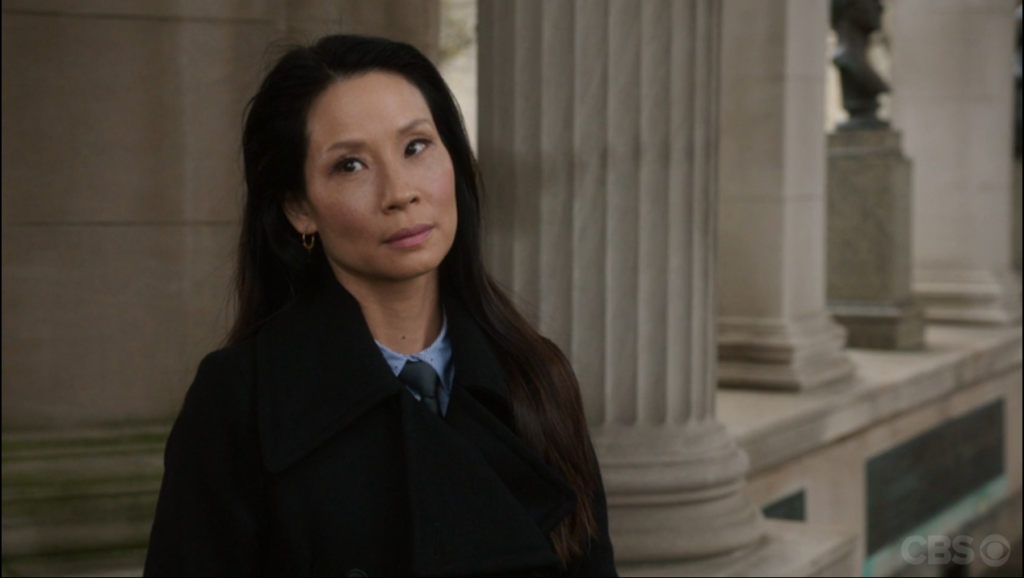

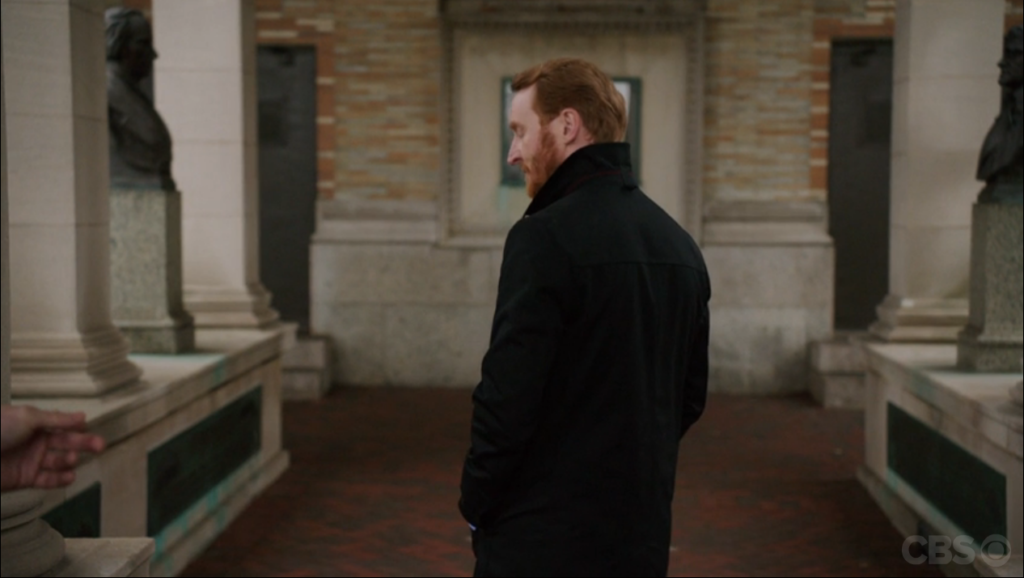
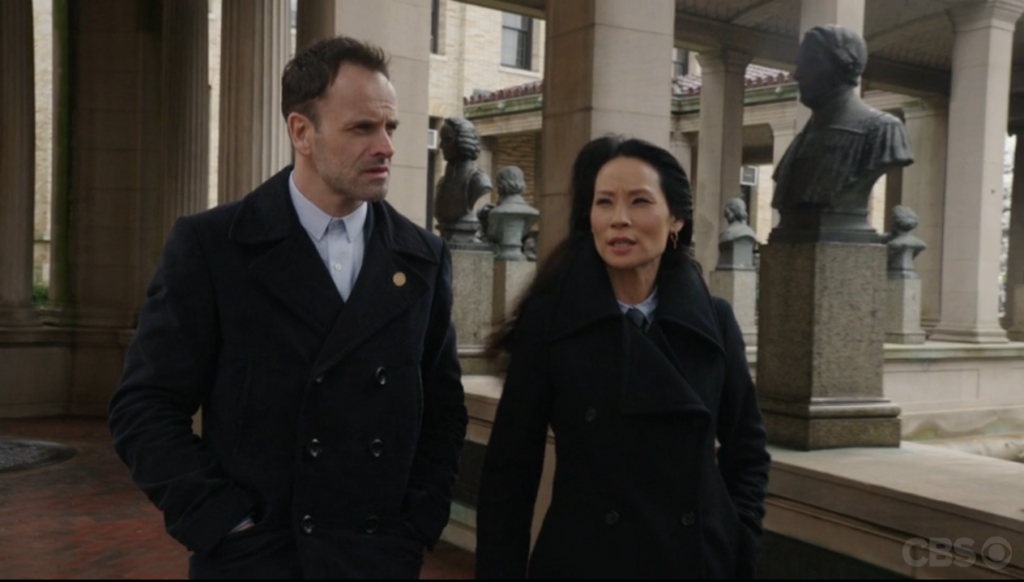

We bring this up as a series of 94 medals were struck between 1962 and 1975 to honor those in the Hall of Fame for Great Americans. D. Wayne Johnson offered up the following history on the medals for the Medal Collectors of America:
In 1962 a coalition was formed to sponsor and market fine art medals to honor these same famous Americans. The coalition consisted of New York University, the owner of the Hall of Fame; the National Sculpture Society, which would furnish an art committee; the Medallic Art Company, which would manufacture the medals; and the Coin and Currency Institute which would market the medals.
The Art Committee was formed of five members with sculptor Donald De Lue as chairman; this committee issued commissions to American sculptors who expressed an interest in creating one or more of the medals. (Those sculptors who had created the bust were given first choice to do the medal.) Over the next 13 years, 94 medals were created by 42 sculptors, predominantly members of the National Sculpture Society.
Rules for the medal design were simple. It had to bear a portrait on the obverse, significant scene from that subject’s accomplishment for the reverse. The lettering HALL OF FAME FOR GREAT AMERICANS AT NEW YORK UNIVERSITY must appear on the medal, either side was permissible. While the design was left to the artist, each submission had to pass the approval of the Art Committee composed of the artist’s sculptural peers.
Medals were struck in two sizes. A large 3-inch (76mm) size in bronze only, and a small 1 3/4-inch (44mm) in bronze and silver. The silver was serially numbered.
Let’s take a look at a few of the bronze medals of the incredibly artistic series.
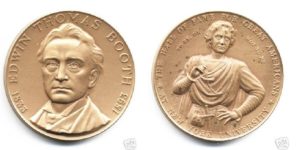
Over the years, many Sherlockian events have taken place during the BSI Weekend at The Player’s Club, most recently the parties thrown by the Baker Street Babes. The Player’s Club was the home of actor Edwin Booth, inducted into the Hall in 1925. This medal was struck in 1970 and was designed by Agop Agopff.
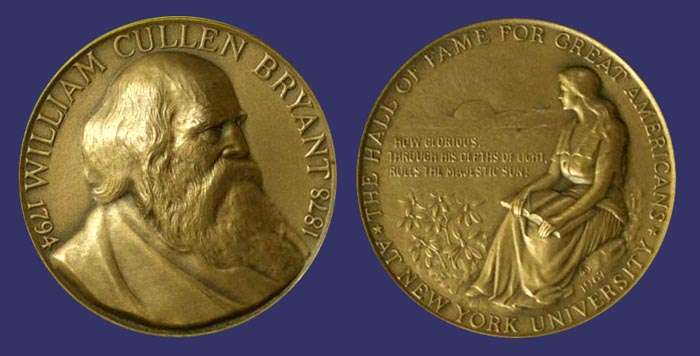
Author William Cullen Bryant, an 1910 inductee, is featured on this 1967 medal by Agop Agopoff.
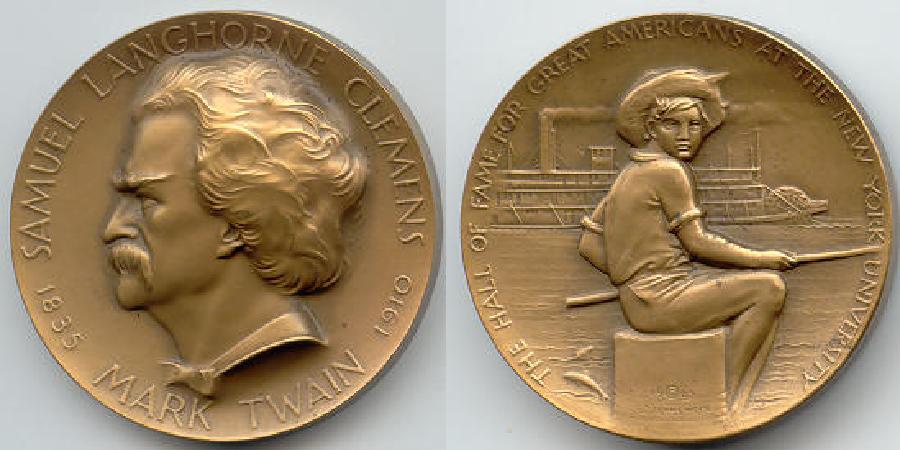
C. Paul Jennewein designed this 1963 medal featuring 1920 inductee Samuel L. Clemens, aka Mark Twain. In 1902, Twain authored the Sherlock Holmes parody, A Double Barreled Detective Story.
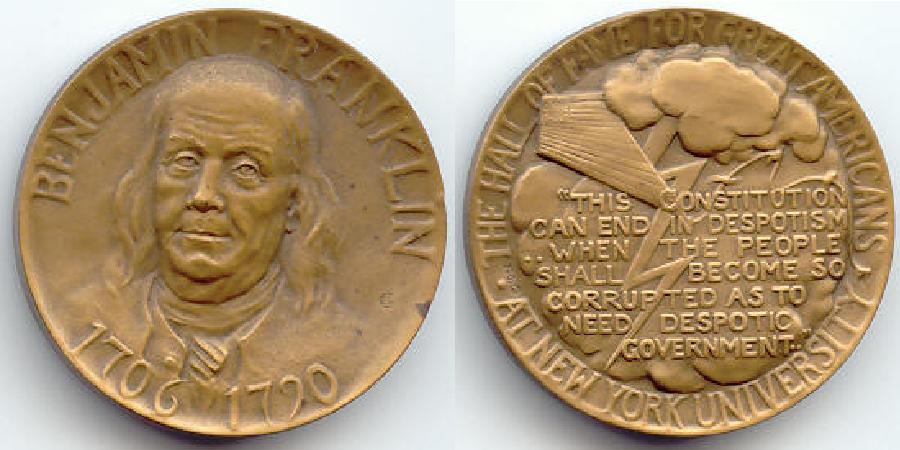
Benjamin Franklin, an inductee from the inaugural 1900 class, had his 1963 medal designed by Elisabeth Chandler.
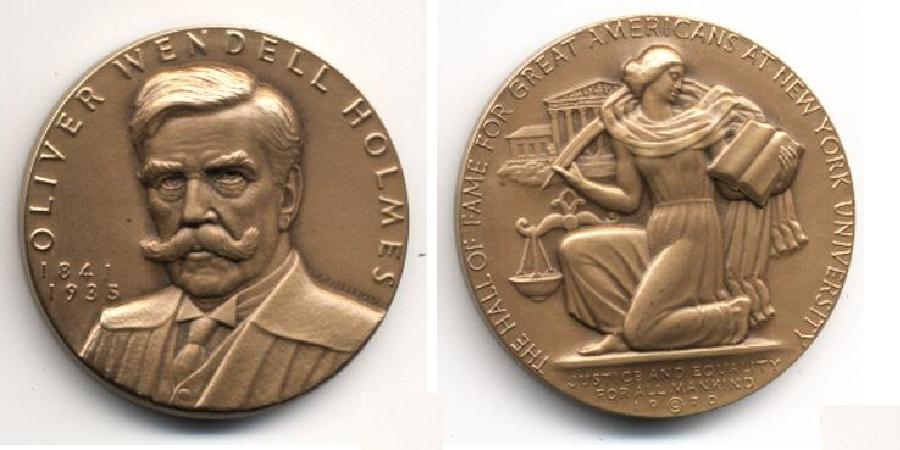
Holmes definitely belongs in the Hall! Both of the Oliver Wendell Holmes (Senior and Junior) are in the Hall (inducted 1915 and 1965, respectively). Joseph Kiselewski designed the 1970 medal for the junior Holmes.
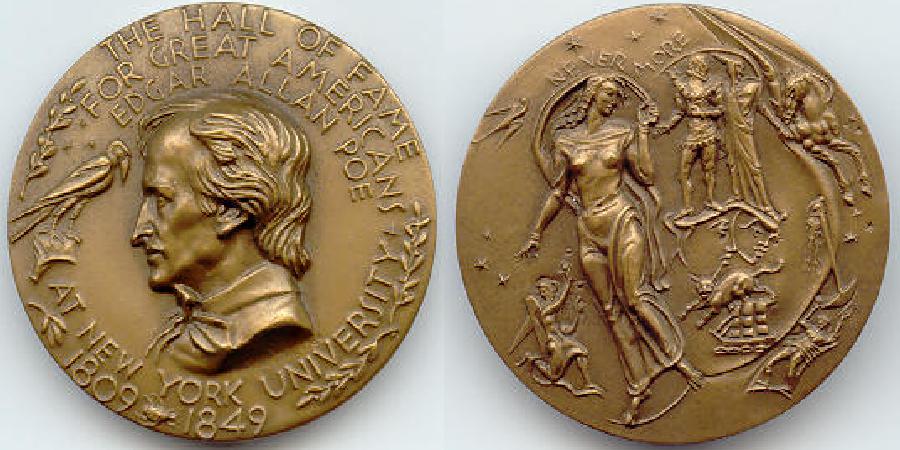
Michael Lantz designed the 1963 medal for 1910 inductee Edgar Allan Poe. Sir Arthur Conan Doyle acknowledged a debt of gratitude to Poe for creating the mystery genre.
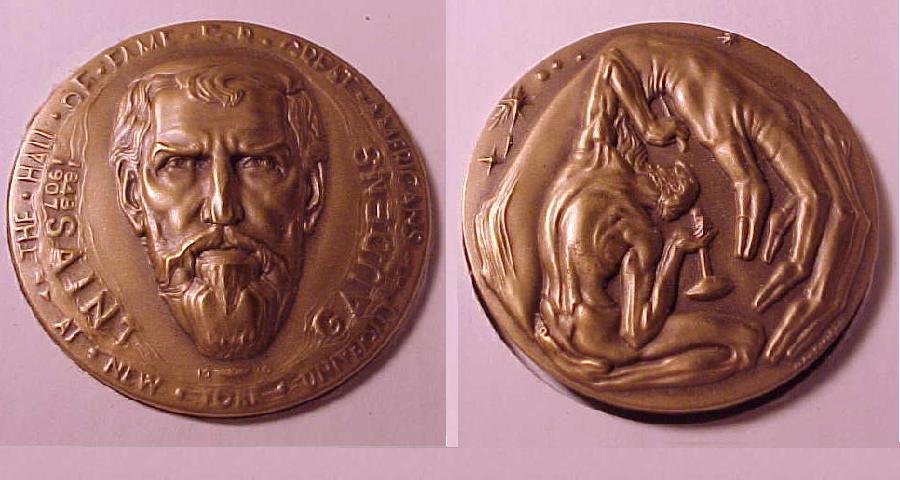
The 1971 medal honoring sculptor, and 1920 inductee, Augustus Saint-Gaudens was designed by Stanley Martineau.
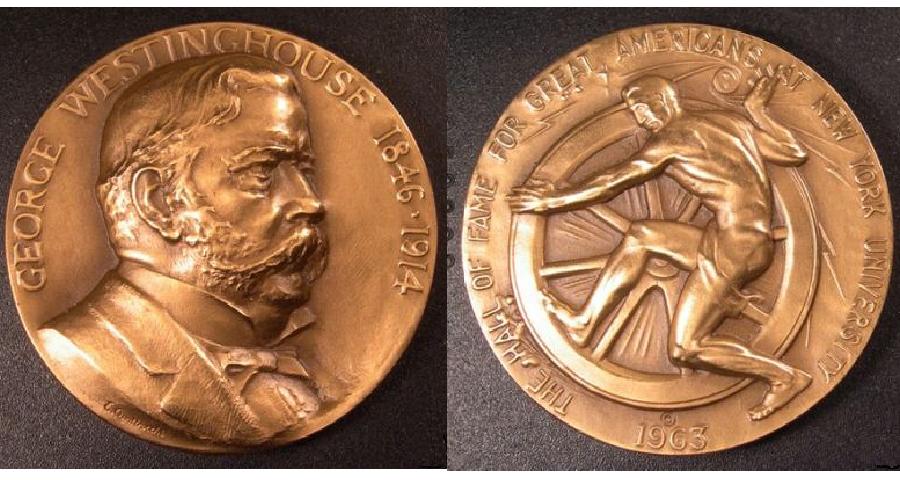
Edmondo Quattrocchi designed this 1963 medal honoring industrialist George Westinghouse, a 1955 inductee into the Hall of Fame. His Westinghouse Electric Corporation, founded in 1886, would become the CBS Corporation when Westinghouse bought CBS and adopted its name. CBS airs the first-run Elementary episodes.
An additional 7 members were inducted in the 1973 and 1976 elections to the Hall. None of these seven had medals struck for them and 5 are still awaiting to have their busts installed at the colonnade.
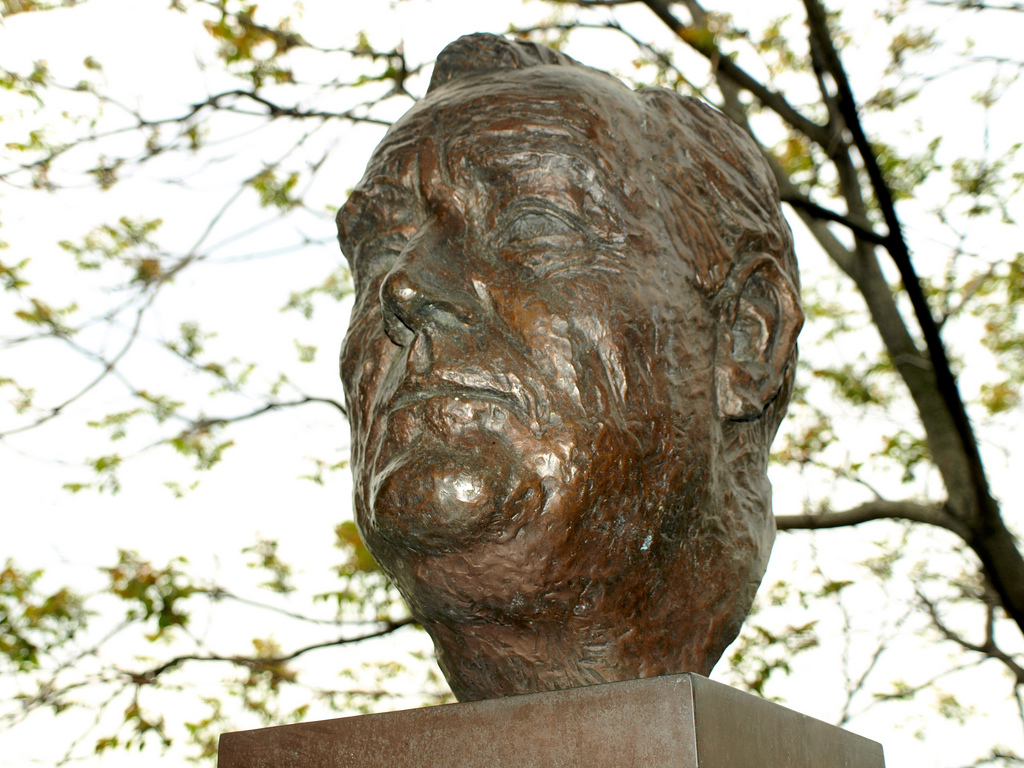
Franklin Delano Roosevelt was inducted into the Hall in 1973, and it took nearly 20 years to raise the $25,000 needed to erect his bust in the colonnade. The bust was sculpted nearly 40 years earlier by Jo Davidson, who earlier in his career, had sculpted a bust of Arthur Conan Doyle. Roosevelt was also an honorary member of the Baker Street Irregulars.
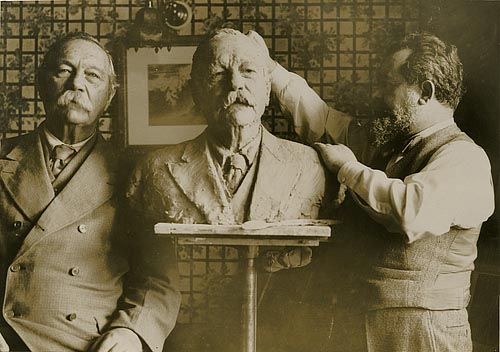
For more information about the medal series for the Hall of Fame for Great Americans, check out D. Wayne Johnson’s complete post, with a downloadable checklist and pictures of all the medals, by clicking HERE.

This story was highlighted in the June 5, 2016 issue of The E-Sylum and can be viewed at http://coinbooks.org/esylum_v19n23a23.html.
This story was discussed in the June 12, 2016 issue of The E-Sylum and can be viewed at http://coinbooks.org/esylum_v19n24a14.html
This story was discussed in two different posts in the June 19, 2016 issue of The E-Sylum and can be viewed at http://coinbooks.org/esylum_v19n25a12.html and at http://coinbooks.org/esylum_v19n25a13.html
[…] may recall the name of Jo Davidson from our earlier post on the Hall of Fame for Great Americans medal series and his bust of FDR. Davidson also sculpted […]